 Jerome Andre
.
February 01, 2024
.
Electric Vehicle Features
Jerome Andre
.
February 01, 2024
.
Electric Vehicle Features
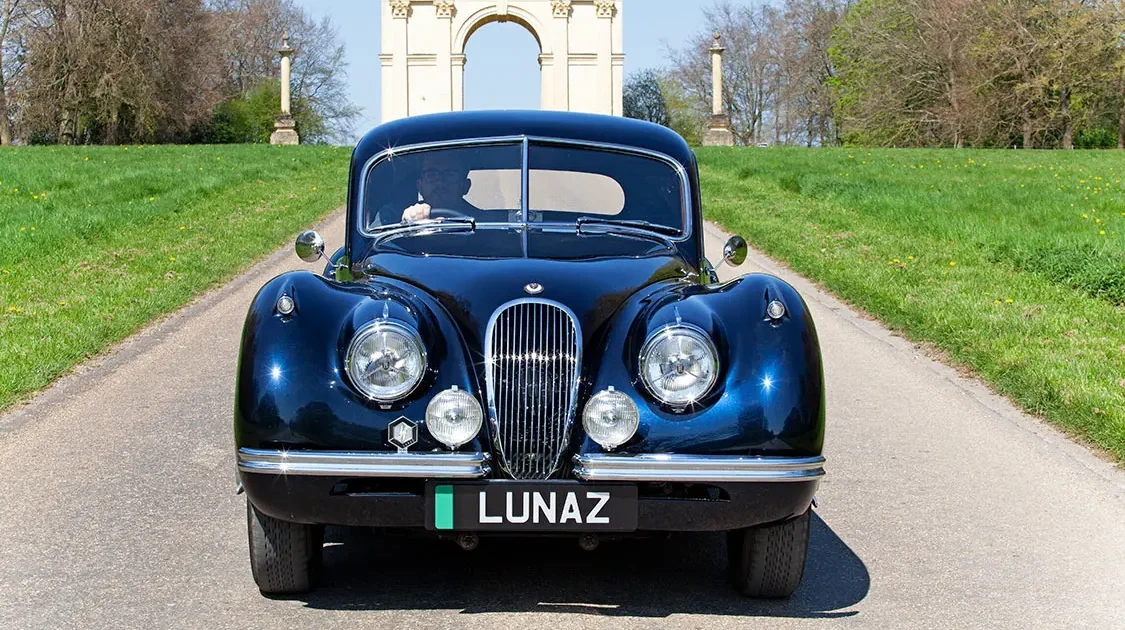
Photos by Jerome Andre
As we drive into the outskirts of Silverstone, UK, home to the iconic British racetrack, a different kind of engineering marvel unfolds at Lunaz. Founded in 2018 by David Lorenz and later joined by Jon Hilton, former Renault F1 technical director, Lunaz has embarked on a pioneering journey. Here, the past is not just preserved; it’s reinvigorated with the pulse of the future.
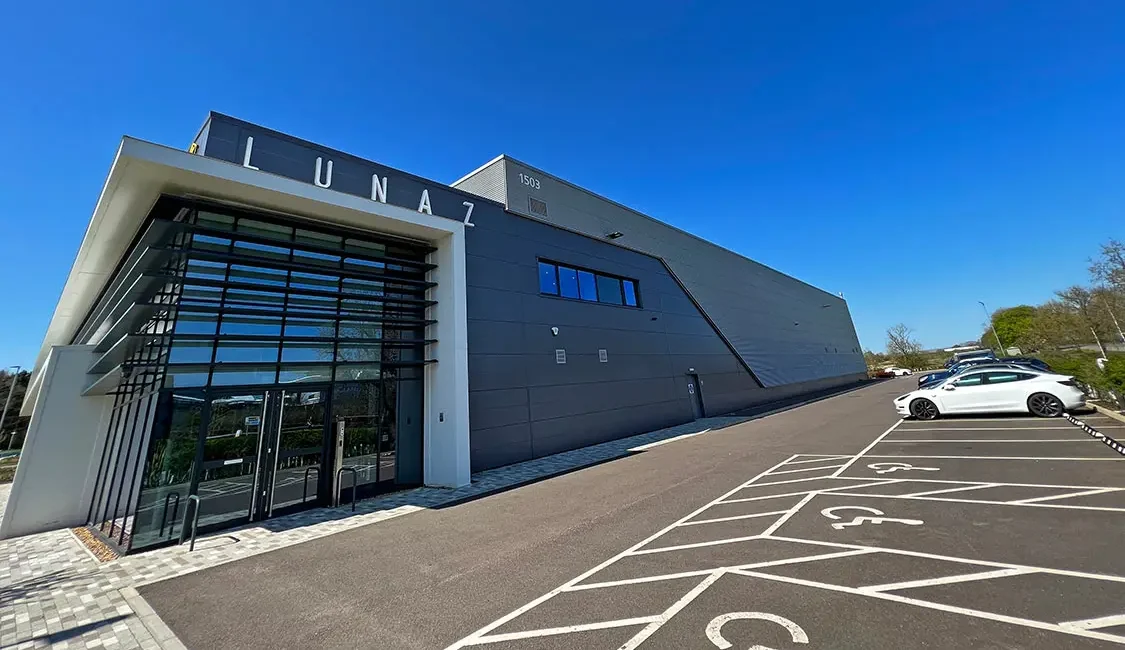
Our visit to Lunaz’s headquarters immediately reveals a seamless blend of tradition and innovation. The facility, absolutely buzzing with action, is where automotive history is lovingly preserved and transformed. Classic cars like Rolls Royce, Bentley, and Jaguar, each a symbol of timeless elegance, are being meticulously restored. Yet, beneath their classic exteriors, a revolution brews – these beauties are being equipped with state-of-the-art, in-house developed electric powertrains and battery packs. As Lorenz, shares, “We’re not just restoring cars; we’re ensuring they can be driven and cherished for generations to come, but in a way that’s relevant for the 21st century.”
It’s about rethinking how we approach the lifecycle of vehicles: We’re not just converting them; we’re giving them a new lease of life.
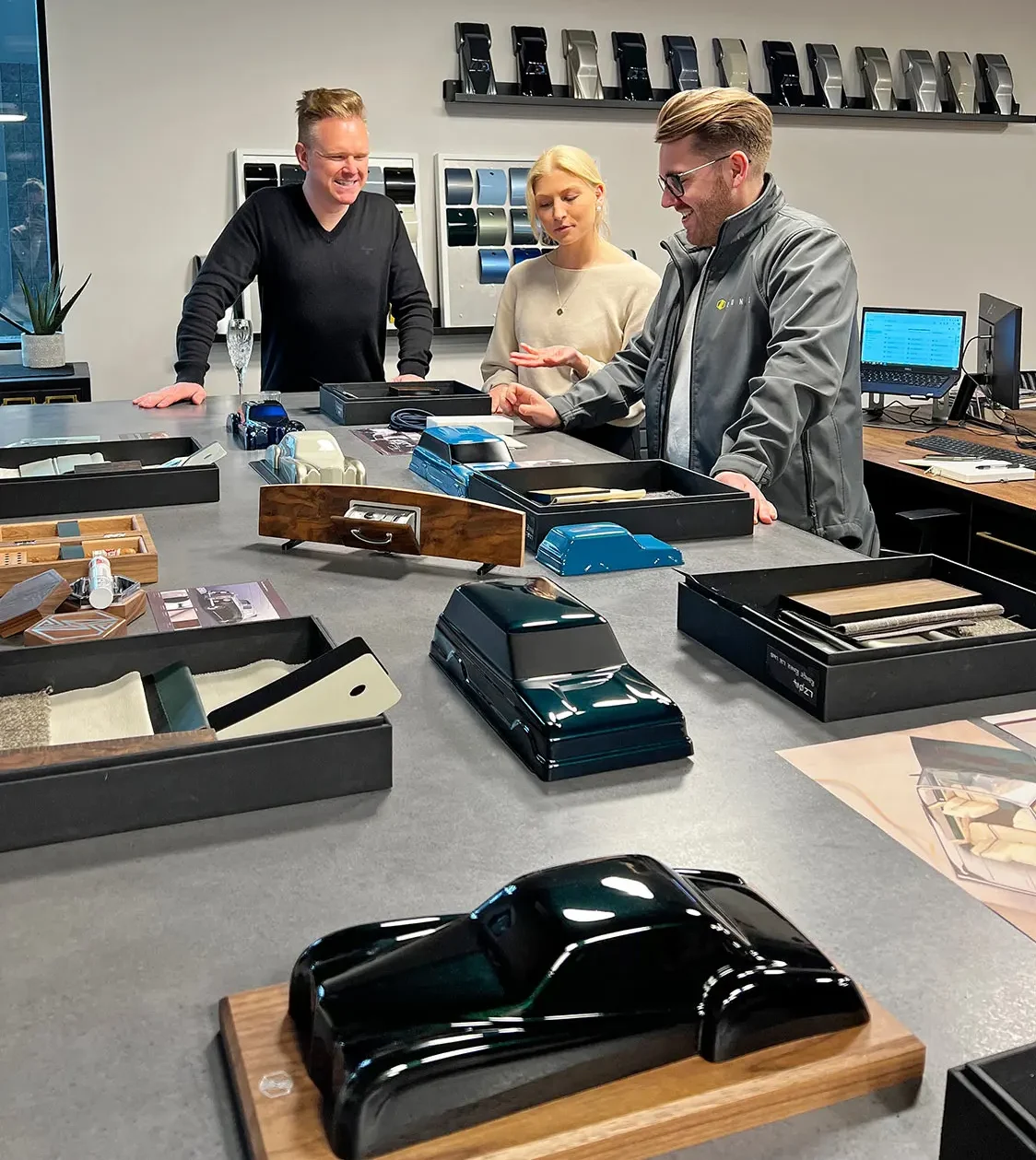
Walking through the design studio, engineering room, and workshop, we witness a symphony of craftsmanship and technology with team members from around the globe. The restoration begins with a thorough inspection, where each vehicle is assessed down to the minutest detail. This meticulous process ensures that the weight distribution, chassis integrity, and overall structure are perfectly aligned with the demands of the new torquey and powerful electric drivetrains. The transformation involves an intricate blend of traditional techniques and cutting-edge technology: Vehicles are stripped to their bare bones, with each part examined, restored, or replaced. The team uses 3D CAD models for each car to ensure flawless integration of new components, blending the original aesthetic with modern functionality.
One of the most striking aspects of Lunaz’s work is the attention to aesthetic detail. The color palette is not just a collection of shades but a thoughtful curation that respects the vehicle’s heritage while embracing modern tastes. Each color choice reflects a deep understanding of the car’s character and the owner’s personality. The customizations extend to the interiors as well.
The team, under the guidance of Jo Slater, Head of Design, works closely with clients to create interiors that are not just visually stunning but also offer contemporary comforts like advanced infotainment systems, seamless navigation, and state-of-the-art audio.
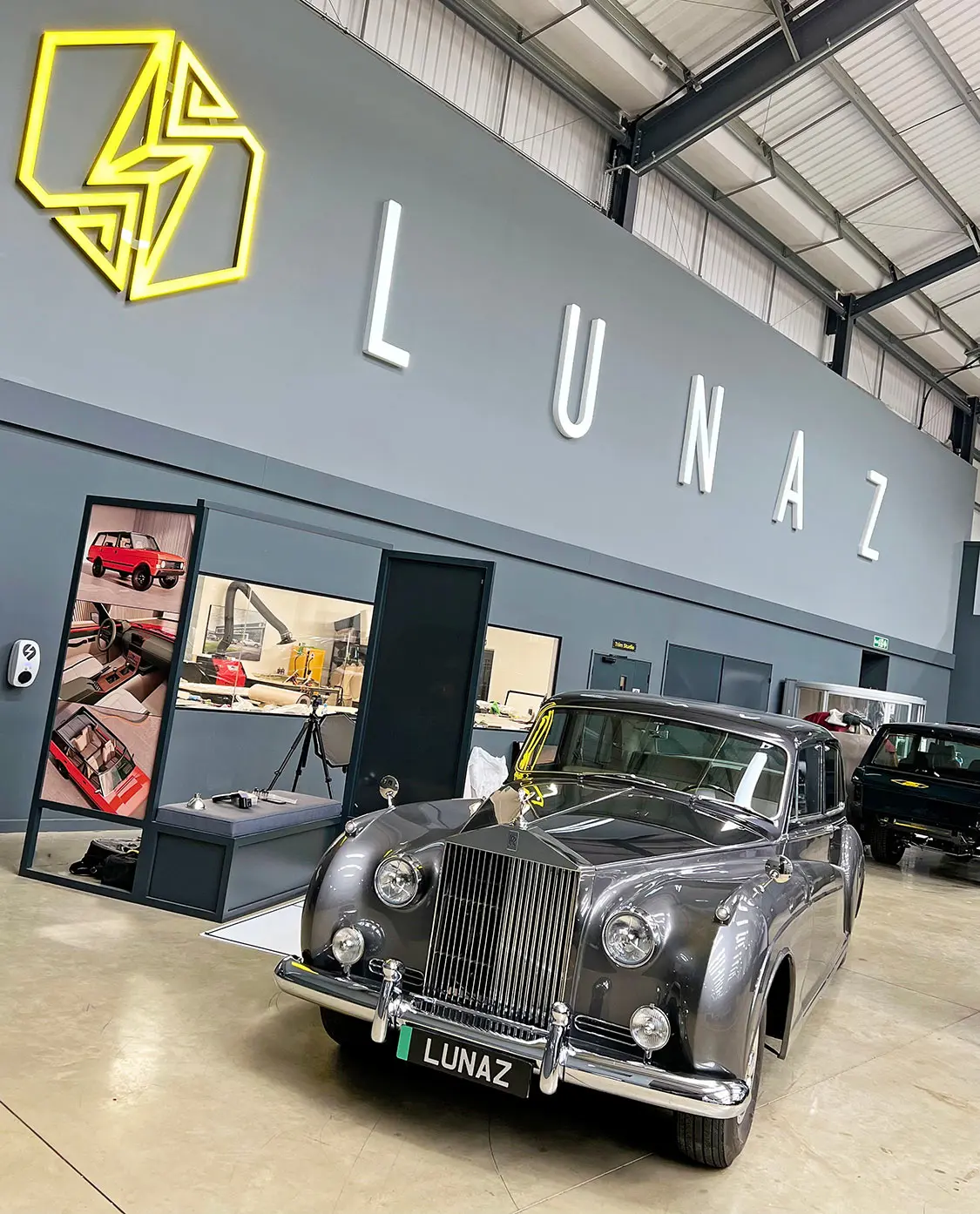
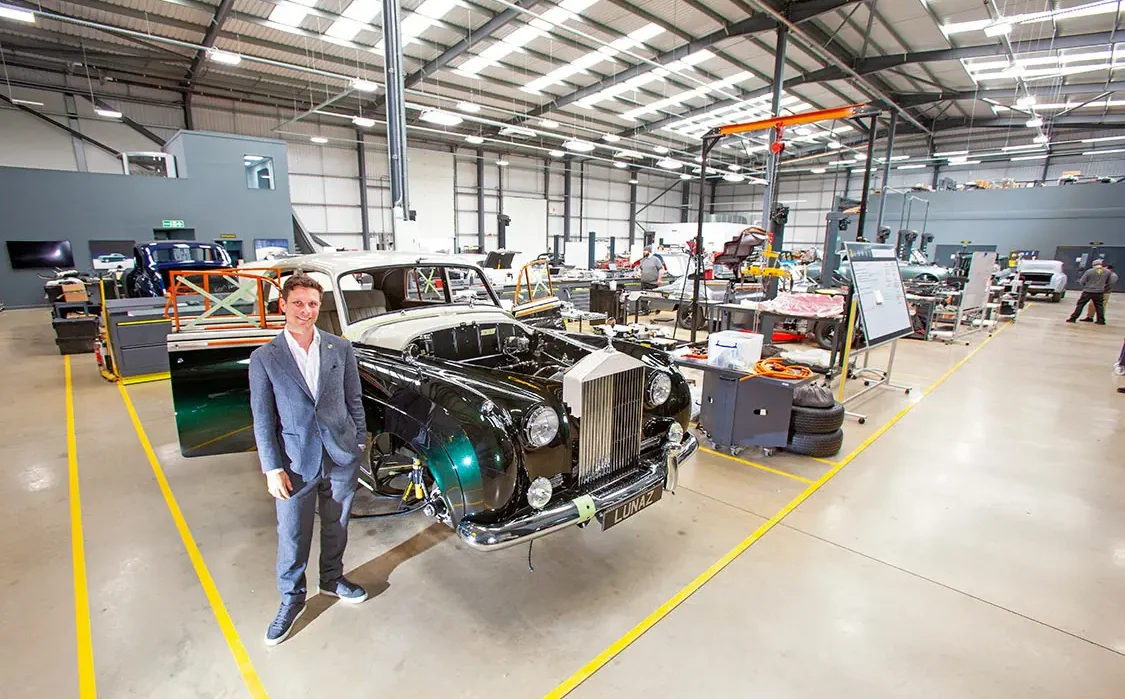
The core of Lunaz’s transformation lies in their revolutionary approach to electrification. Unlike others who might retrofit existing electric systems, Lunaz develops bespoke, modular electric powertrains. Each car’s new electric heart is carefully designed to balance its historical integrity with modern performance requirements and the owners desire. “We meticulously tailor our powertrains to enhance the driving experience while respecting the original character of these classic vehicles,” Lorenz explains.
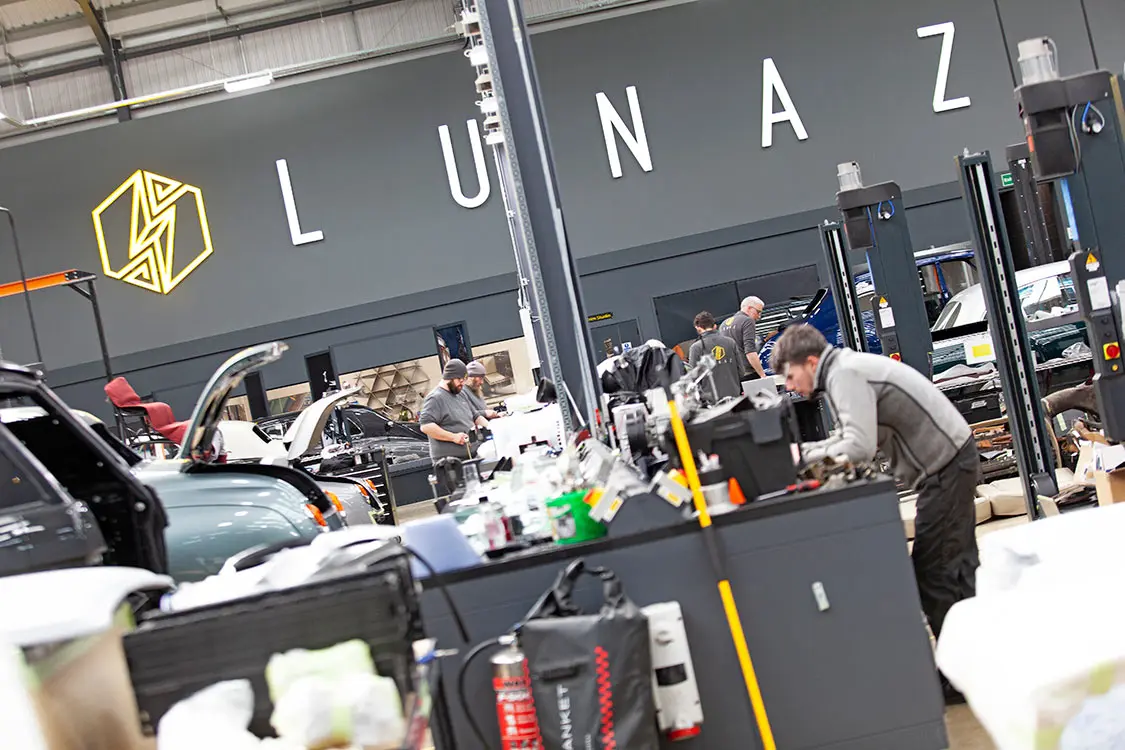
The result is a harmonious blend of past and present – iconic cars that retain their soul while embracing the efficiency and sustainability of electric power. Understandably, the Lunaz team is very discreet about the specific figures and intricate details of their powertrains.
Amidst the technical prowess and innovative processes, what stands out most at Lunaz is the human element. Each team member, from engineers to designers, clearly shares a deep passion for their work. This collective drive is palpable in every corner of the facility and in each vehicle they produce.
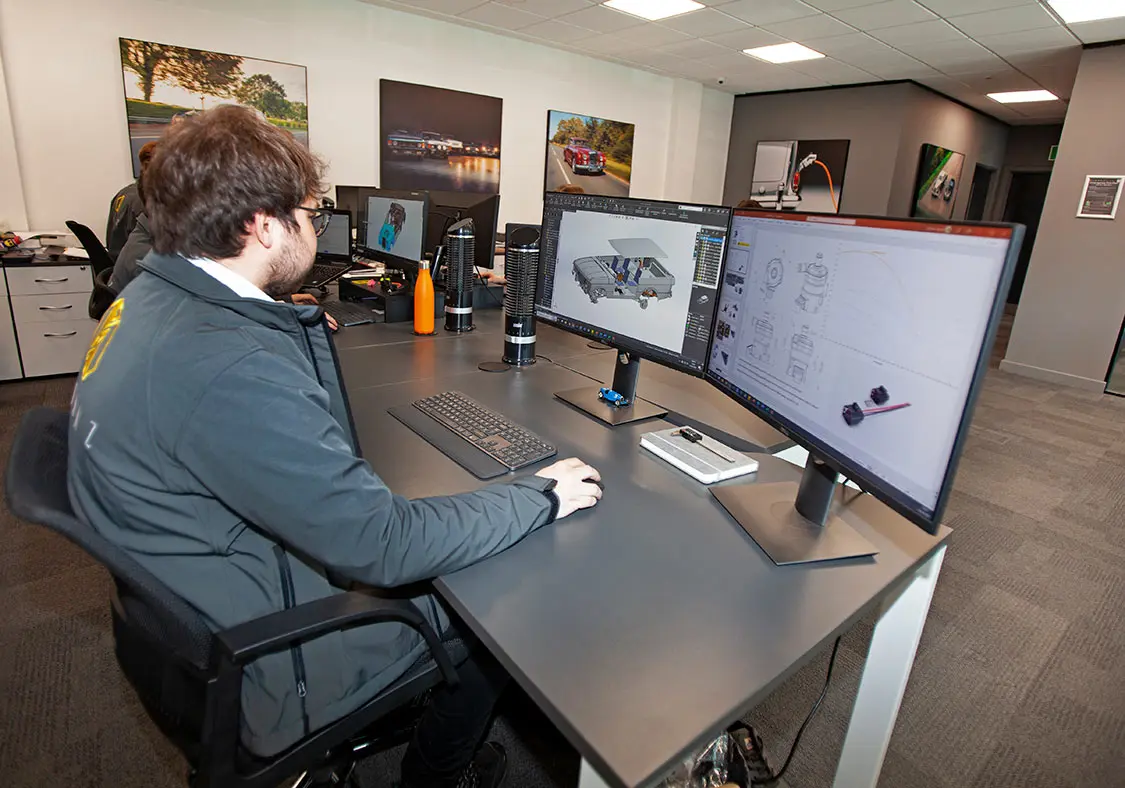
Lunaz’s expertise isn’t confined to their $500-850.000 luxury classics. The company’s mission extends to commercial vehicles, especially refuse trucks. In this arena, they demonstrates its commitment to environmental sustainability and practical innovation. The transformation of garbage collection vehicles from diesel to electric is a significant stride towards cleaner, more efficient urban environments. By upcycling existing trucks, Lunaz is making a tangible impact on reducing waste and carbon emissions. “It’s about rethinking how we approach the lifecycle of vehicles,” Lorenz asserts. “We’re not just converting them; we’re giving them a new lease of life.”
Lunaz are poised to become a global leader in commercial vehicle electrification.
These vehicles, equipped with a staggering 5000Lb-ft of torque and capable of accelerating from 0-50mph in just six seconds, represent a leap in efficiency and performance in the world of commercial vehicles. Lunaz’s upcycled electric garbage truck, soon to be delivered to Buckinghamshire Council, is a testament to the company’s ability to transform what was once a diesel-powered necessity into a cutting-edge, environmentally friendly powerhouse. The truck, based on the proven Mercedes Econic platform, retains 80% of the donor vehicle in a refurbished state, showcasing Lunaz’s commitment to sustainability by saving a significant amount of embedded carbon compared to manufacturing a new EV from scratch.
The implications of such innovation extend beyond environmental benefits. Lunaz’s approach to refurbishing these heavy-duty vehicles offers a financially viable alternative to local authorities, saving costs without compromising on functionality or performance. With each refuse truck preserving much of its original structure while receiving Lunaz’s bespoke electric powertrain, the company demonstrates how upcycling can be a pragmatic and effective solution in the transition to cleaner energy. This pioneering work not only positions Lunaz as a leader in sustainable automotive practices but also serves as a blueprint for the future of commercial vehicle electrification. They plan to deliver 57 electric ‘bin lorries’ by the time you read this.
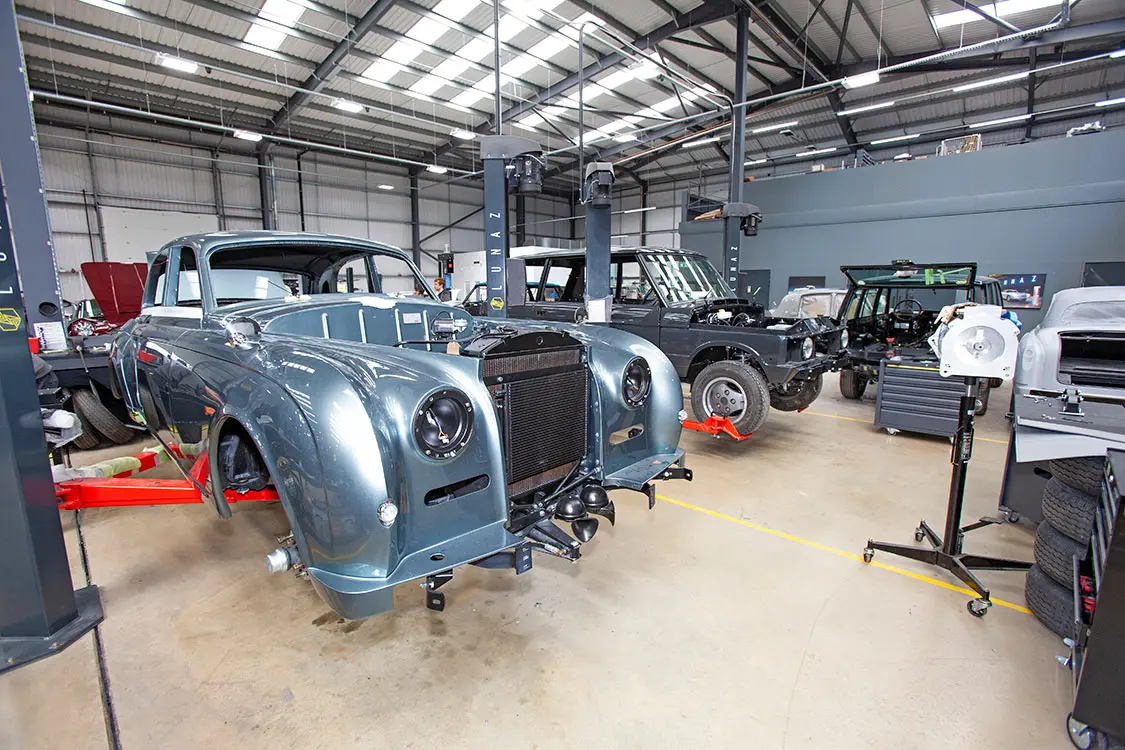
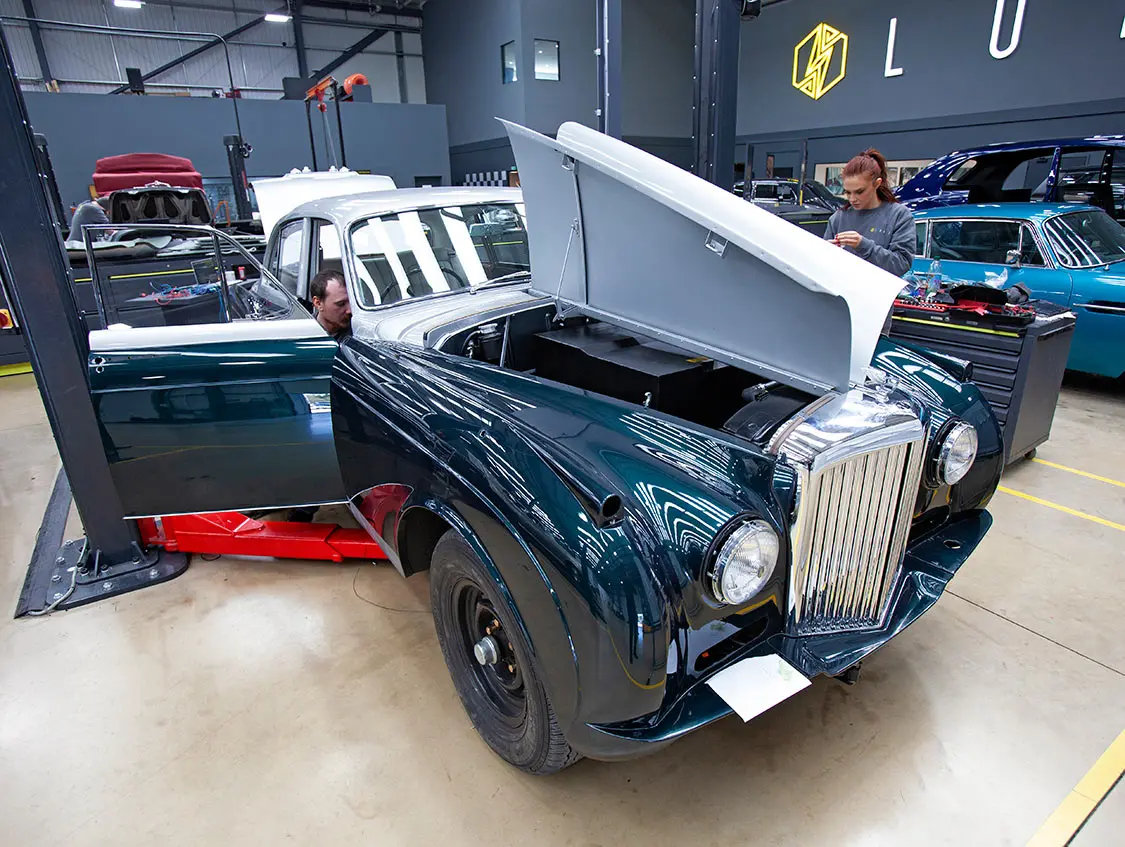
Lunaz’s ambitions stretch far beyond the UK. With their recent expansion of the Silverstone facility and discussions with various governments, they are poised to become a global leader in vehicle electrification. This expansion reflects not only their growth but also the UK’s prominence in the field of electric vehicle technology. Jon Hilton’s contribution to Lunaz is a crucial element of their success. His extensive experience in Formula One and hybrid powertrains brings a level of technical excellence and innovation that sets Lunaz apart. “The expertise we’ve cultivated here is unique, blending high-performance engineering with sustainable practices,” Hilton shares. At its core, Lunaz is driven by a philosophy that challenges the conventional automotive lifecycle. By upcycling existing vehicles, they offer a solution to the emissions crisis that doesn’t simply shift the problem elsewhere. “Each vehicle we convert is a step towards a cleaner future,” Lorenz concludes. “We’re dedicated to reducing global emissions, one vehicle at a time.”
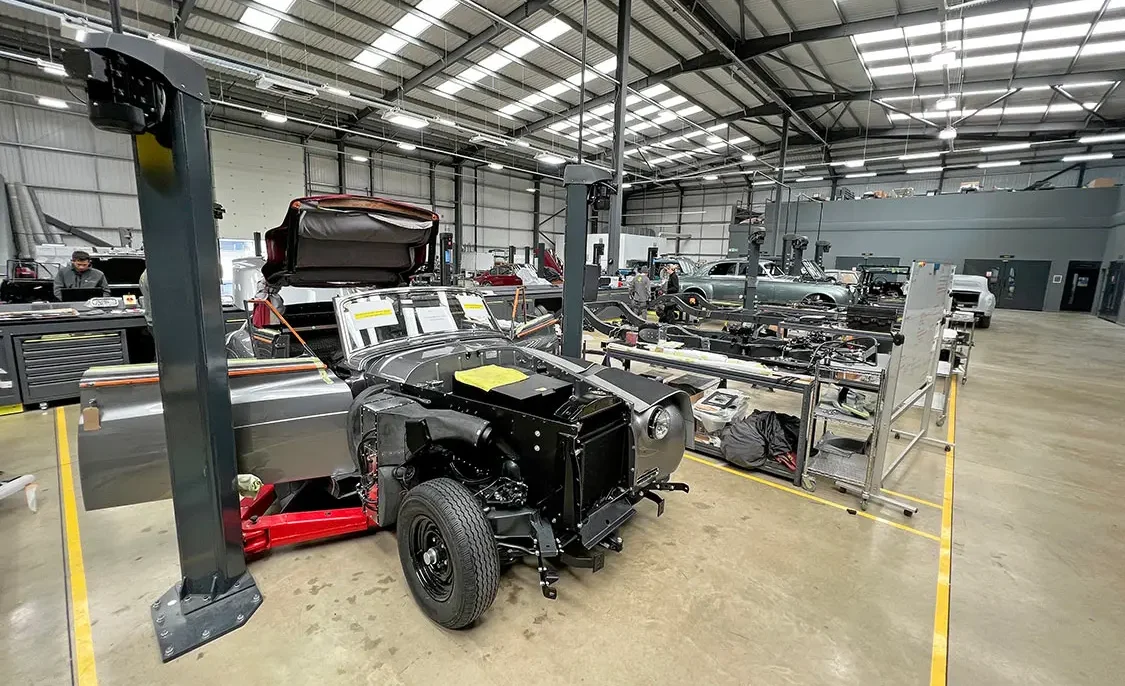
As we complete our tour of Lunaz, it’s evident that this isn’t just a car company, it blends heritage with forward-thinking technology. The story of Lunaz is about more than electrifying classic cars; it’s about inspiring change in an industry often criticized for its environmental impact. With each vehicle they restore and electrify, Lunaz is steering us towards a more sustainable, more conscientious automotive future.
We use cookies to enhance your browsing experience, serve personalized ads or content, and analyze our traffic. By clicking "Accept All", you consent to our use of cookies. Visit our Cookie Policy for more info.
Notifications
Share Link